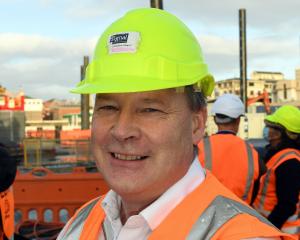
"We are limited in what we can do because of asbestos issues and building fabric issues — we can’t do major work, but we are looking at what can we do to create additional capacity and space."
There would be constant disruption for years to come at the hospital, but doctors and patients were in facilities which should have been replaced years ago, Mr Fleming said.
"That said, the decision to build the new ambulatory day surgery facility on the new site makes it far less disruptive than it would otherwise have been."
Breaking the build up in to two stages was a logical move, Mr Fleming said.
"Firstly it gives us certainty as to when we will have additional capacity on our system — we know we have five years to deal with — and we now know that when that ambulatory facility opens at the end of 2023 we will then be able to repurpose the space vacated from Dunedin Hospital to give us some additional capacity to get us through to 2028.
"Secondly, it says to our clinicians we now have to cope with this facility for five years — what can we do to deal with it?"
The SDHB was now preparing a business case for the Ministry of Health for critical work on the current hospital.
"The infrastructure business case is approximately $20 million, and we haven’t identified what we can do in terms of increasing capacity yet. We haven’t costed that up," Mr Fleming said.
"But I am delighted both the partnership group and the Government have made a commitment to bring this forward, as it will really help in the medium term."
National health spokesman Michael Woodhouse said yesterday’s announcement was positive, but raised serious questions about the design process behind the new hospital.
"Dr Clark said that it was really important that the voice of the South was strong in the discussions about the hospital, but there has been absolutely no engagement with the public for most of the year, Mr Woodhouse said.
"In August, Pete Hodgson announced phase one of the business case had been concluded, but gave absolutely no detail about the nature of that business case."
Reference had been made earlier this year to the possibility of a two-building model but that had never been confirmed Mr Woodhouse said — although buying two city blocks suggested it was a possibility.
"But there has been very little engagement with the public about how this is going to look."
John Adams, chairman of the Clinical Leadership Group steering the medical design of the hospital, said it was exciting to see a tangible development in the hospital rebuild after a great deal of planning work.
"We now have an idea of what is happening and we can now engage as clinicians with the more detailed design, both in terms of function and confirmation of the physical spaces."
Dr Adams said there had been a series of meetings between clinicians and planners as to what a two-building model would entail.
"There will be changes to the original idea, notably bringing day surgery into the ambulatory services centre.
"User groups have looked at what that will mean and several groups have put their hands up about wanting to be involved when the move comes."
The two building model was a "double-edged sword" as it would create strain in other sections of the hospital, he said.
"However, the reason for doing this was to create flexibility and give more space to services which are currently really struggling to have adequate space, so there will considerable advantages to doing this."












